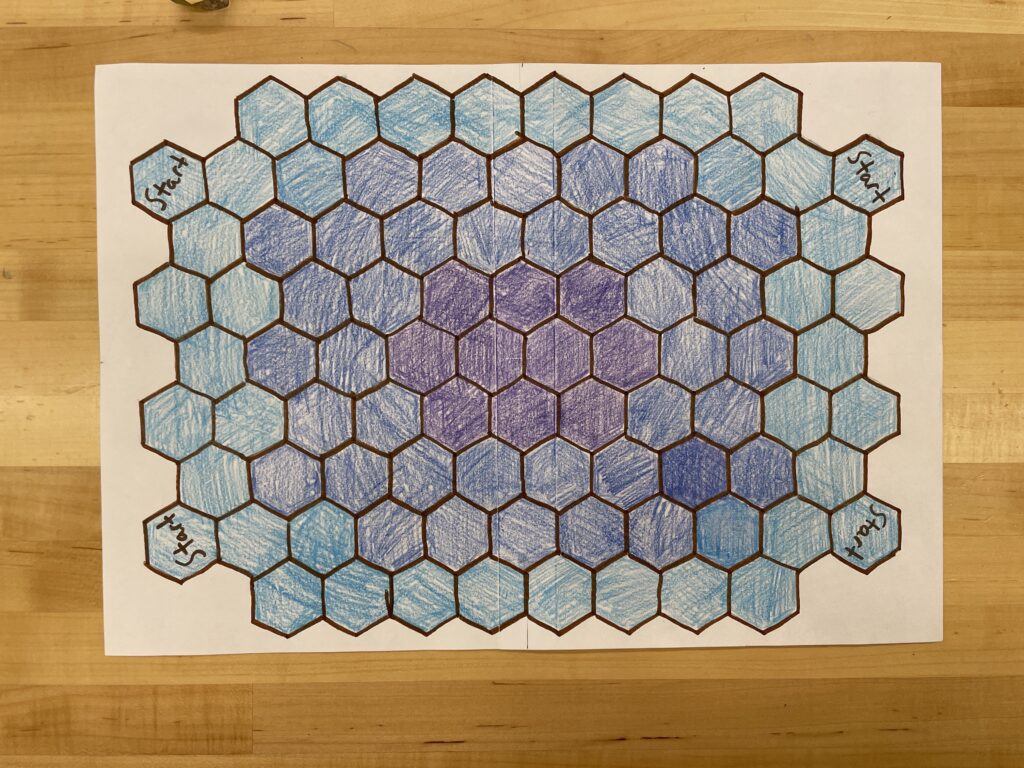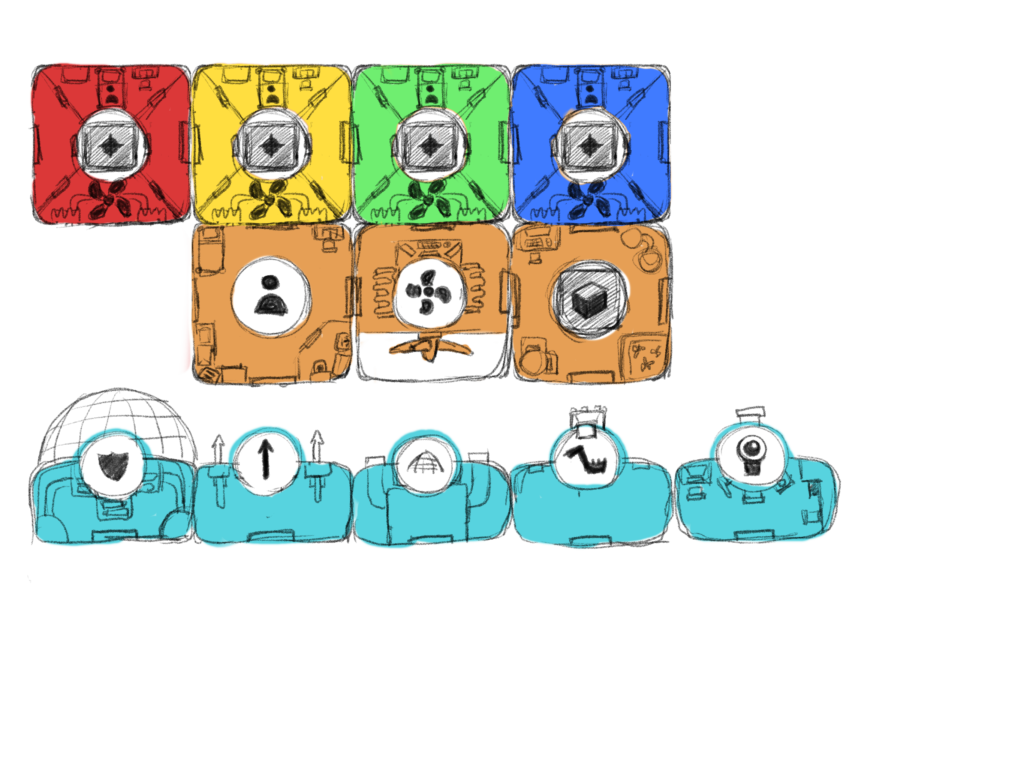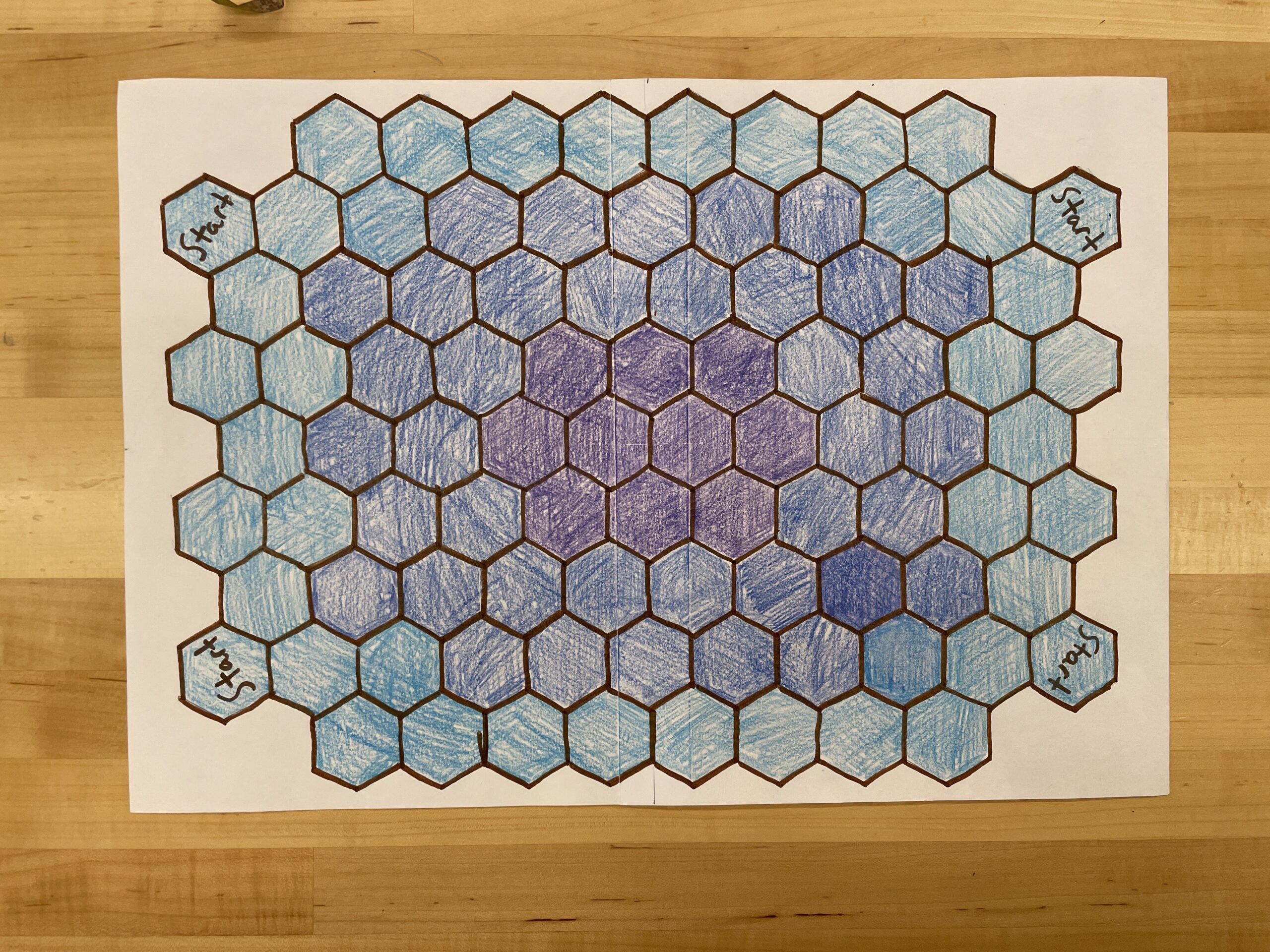Team Members: Jamie Shiao, Jude Denning, Ben Brown, Matt Brennan, Ben Adler
UPDATE 3/7
After more in-class playtests, we have turned our game into a more streamlined experience. Project Mariana is now a competitive engine-building board game with an element of creature collecting. The competitive part is reflected by the race to collect more money, as well as the ability to sabotage other players. The engine-building part is reflected by the creation of your submarine, where adding components allows you to take other sub-actions. And finally, the creature collection part is reflected in capturing and turning in creatures for big rewards. Now, I’ll cover the development of each of these aspects of Project Mariana in a short paragraph.
Competition
The goal of the game was to kill the kraken and collect its skull, but now the goal of the game has become collecting as much money as you can. There are many different playstyles that our game enables, but at the end of the day, the focus is on making money. Here are some ways that we revised Project Mariana to do that:
- The creature and treasure cards now only provide one type of reward: money. There is always an option to record the encounter to earn some money, but it is way more profitable to take some other action. However, these actions require components.
- Buying components is now always an option at the beginning of a player’s turn, so they can use their money to increase their chance of getting more money before they take their actions.
- Obstacle cards now can provide two types of rewards: money or components. Components are a way to earn even more money.
- Deeper encounters have greater rewards than shallower ones.
- While earning money is great, stealing other players’ cargo or sabotaging them and forcing them to lose money is another viable strategy, making competition a rewarding risk.
Engine Building
We have made our engine-building mechanics more efficient, mainly by removing the need to take an additional Install action with every component you find. As mentioned before, players can now buy components at the start of their turn, and any component they find, while damaged by default, can be immediately added to the submarine. The central hub now counts as 1 of each module component at the start so that players can start capturing/killing/recording encounters as soon as possible. We’ve also made damaging components consistent and make sense. Utility components are damaged through their use in encounters or when attacking or defending against another submarine, representing a low-risk cost. Module components are damaged if you take an action in range of a dangerous Kraken Tentacle, representing a medium-risk cost. The central hub is damaged through getting attacked by a Hostile Creature or getting attacked by another player, with the possibility that your submarine must be rescued for a monetary cost, representing a high-risk cost.
Creature Collection
Although the main focus is on collecting money, creature collection is also part of the game. We changed the introduction of the rules to place the players in an alien world, so that the exploration and discovery aspects adds a sense of adventure to the game. The creature cards now have custom icons on them, some of which are special, which can help endear the players to certain cards and make the game more fun. The aesthetics of an ocean exploration game like this one contribute a lot to the funness, so we improved our assets to have more fun details but still be clear.
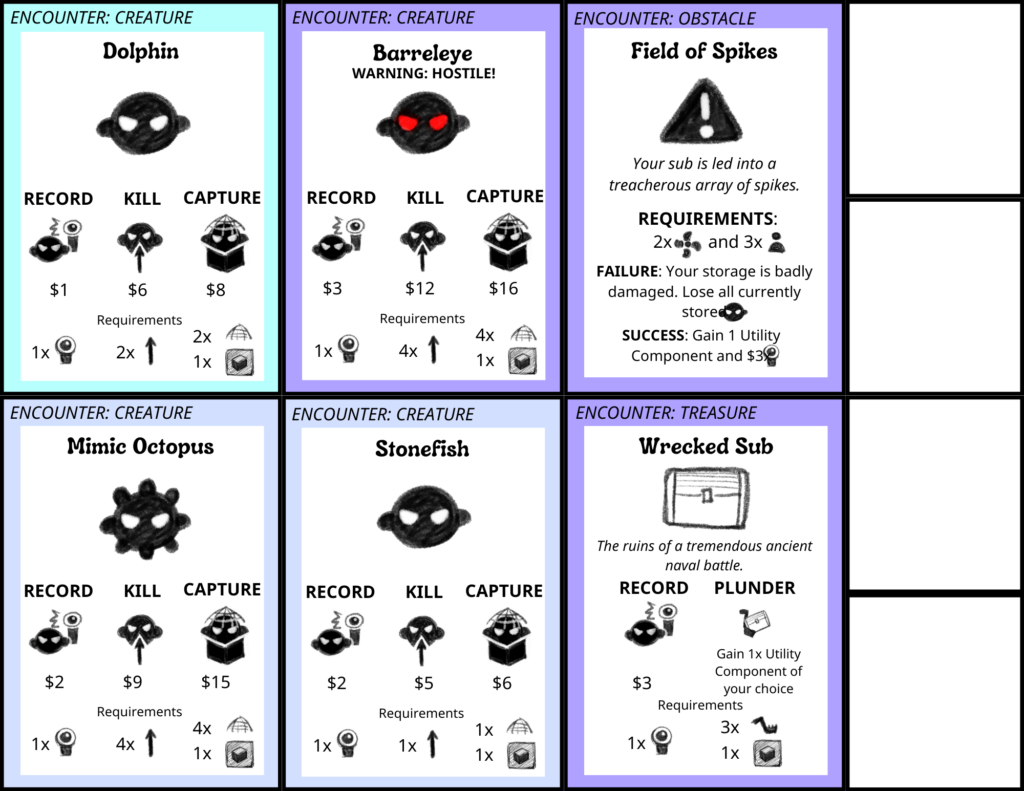
Rules Update
In our previous playtest, we learned that the rules would become easier to understand if pictures and graphics explained the rules. To that end, we have made a consistent pictorial language surrounding our actions, components, and game pieces. The clearest way to explain this is through our cheat sheet, which has now been updated to reflect our changed rules, and includes many little icons that are consistent in our encounter cards and component cards as well.

Our rules also take care to explain what players do with cards and game pieces at certain times, such as when to discard cards, when to move game pieces, what certain game pieces do, and what
Assets Update
Speaking of creature and encounter cards, they have gotten huge upgrades so that it’s clearer what they represent. We have a lot of different custom pieces in our game, including over 60 unique encounter cards, over 100 unique component cards, 5 3D printed markers, boards to place the card piles, and an ocean board that has been made more colorful.
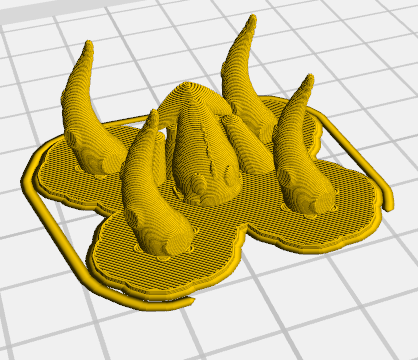

If We Had More Time
Some things we would like to add in future iterations of the game are:
- Increased incentive to leave the shallow depth through creatures being depleted permanently during a game.
- More varied artwork for different creatures.
- More special components like engine boosters or more powerful harpoons.
UPDATE 2/29
Since our last playtest (notes here), we have taken a lot of the feedback and reworked the game to be a better playful experience.
Rules
While we received feedback that our rules were pretty clear in the last playtest, they seemed to be wordy and overexplanatory. We went through the rules, trimmed up the wording, and made the actual content more concise and consistent. Some of the vocabulary was also confusing, such as the difference between Record and Capture (in the context of photography, these two terms mean the same thing). So we made terms more unambiguous. Finally, we reworked some major game mechanics, so we changed the rules to update that.
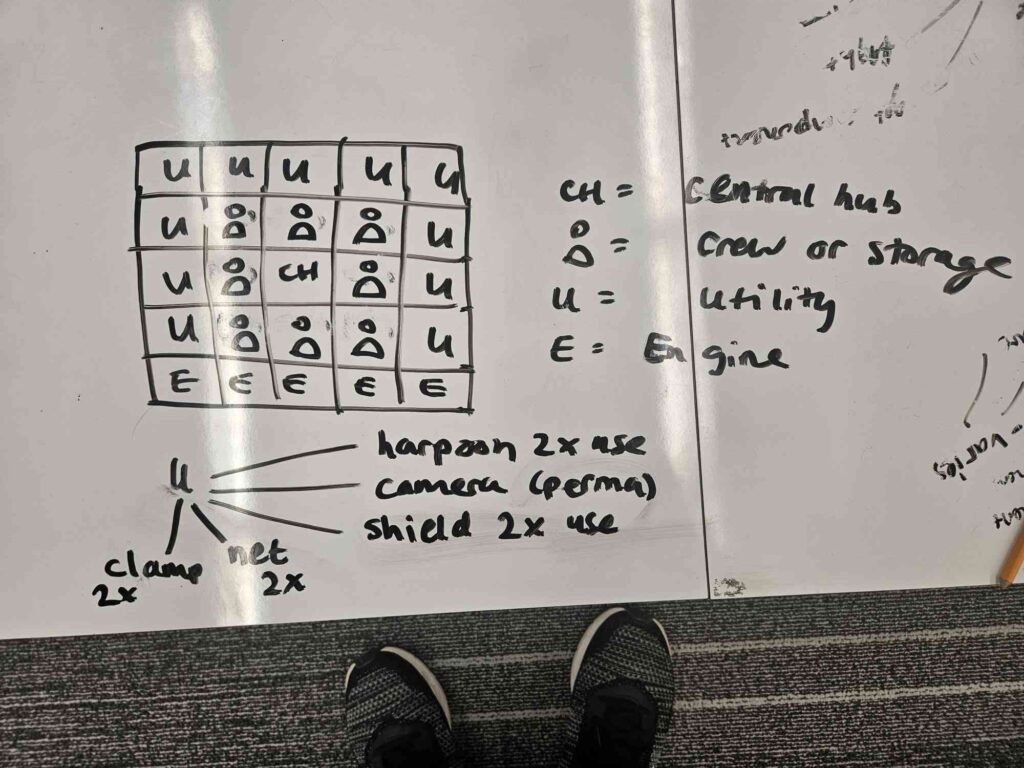
Game Mechanics
Because our game was on the fence between cooperative and competitive, we decided we needed to shift into one or the other direction so it was more clear what was important in the game. Ultimately, we decided to pivot into a more competitive game, and to do so, we outlined three important game mechanics we needed to rework. 1) We needed to add a way for players to directly sabotage each other, 2) we needed a way to add tension and incentive to go deeper, and 3) we needed to make damage more consistent and a real risk. This involved a lot of discussion and playtesting.
- PvP
We added a way for submarines to damage each other. That sentence is oversimplifying a lot, but basically we already had harpoons as a game mechanic, so we were able to expand it to damaging other submarines. The goal of doing this is to damage the central hub so that treasures and creatures could be stolen. This adds more tension between players and promotes more competition. One important distinction is that submarines cannot KILL other submarines, but they can simply damage them. This is because we added a cost to being killed, where you will lose money or components on your ship, and we think making money decrease is not a good idea. This is because the amount of money you have at the end is what determines who wins, so it’s not good to have a reliable way to forcibly decrease someone else’s money. - Tension/Incentive
We reworked kraken tentacles to be a more immediate threat. Before, they only spawned as part of drawing the kraken card in the deepest level, but this made it so they were kind of superfluous, only existing to be killed. In this rework, we made it so tentacle cards can be drawn in the mid-level as well as the deep-level. These new tentacles affect a 6 tile area around them, where they can damage the components of any submarine that ends up in that area. They can be killed with enough harpoons. This basically creates obstacles in the mid-depth that can be overcome but when there are tentacles all over the board, will be very tough. The only way to permanently get rid of all tentacles is to kill the kraken head, which is what we renamed the original kraken card to. This makes it so there is an incentive to go into the deep end, not just the monetary reward of killing the kraken. - Damage
Damage was very inconsistent in our first iteration of the rules, so we had to rework it. The same as before, most actions in the game can damage components. This has held the same. Now, the damage dealt to the central hub is a higher risk than it was before. Getting damaged twice means your submarine has to be emergency rescued by your parent company. Getting rescued costs a hefty price. You can be damaged by failing an obstacles check card, you can be damaged by other players, and you can be damaged by creatures. You can only die by being already damaged and drawing a card that damages you (creature or obstacle).
There are still more reworks we need to make, such as:
- Making a better template for creatures
- Making cards more consistent
- Playtesting the balancing of money and progression
Assets
Steady progress is also being made on final assets. For example, we created a cheat sheet that makes it easier for people to understand what they can do in a turn. We also created a bigger ocean board. Finally, we made new component artwork, as they were one of the most confusing aspects from the last playtest.
